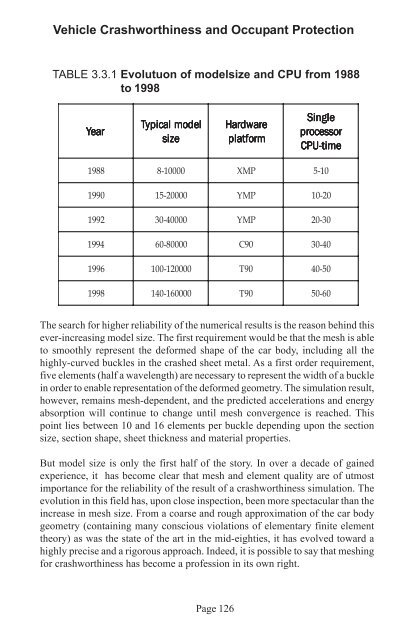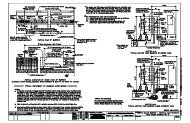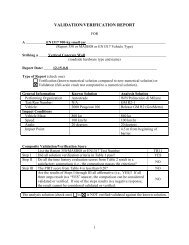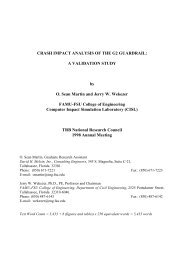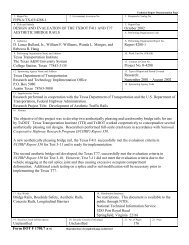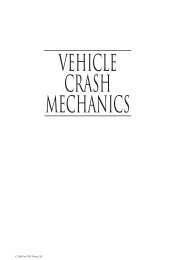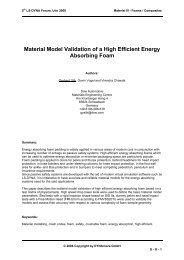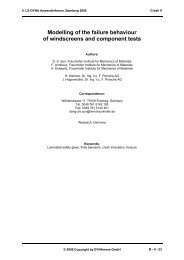Vehicle Crashworthiness and Occupant Protection - Chapter 3
Vehicle Crashworthiness and Occupant Protection - Chapter 3
Vehicle Crashworthiness and Occupant Protection - Chapter 3
You also want an ePaper? Increase the reach of your titles
YUMPU automatically turns print PDFs into web optimized ePapers that Google loves.
<strong>Vehicle</strong> <strong>Crashworthiness</strong> <strong>and</strong> <strong>Occupant</strong> <strong>Protection</strong><br />
TABLE 3.3.1 Evolutuon of modelsize <strong>and</strong> CPU from 1988<br />
to 1998<br />
Yea<br />
ear<br />
Typical<br />
model<br />
siz<br />
ize<br />
Hardwar<br />
ardware<br />
platfor<br />
latform<br />
Singl<br />
ingle<br />
processo<br />
rocessor<br />
r<br />
CPU-tim<br />
PU-time<br />
1988<br />
8-10000<br />
XMP<br />
5-10<br />
1990<br />
15-20000<br />
YMP<br />
10-20<br />
1992<br />
30-40000<br />
YMP<br />
20-30<br />
1994<br />
60-80000<br />
C90<br />
30-40<br />
1996<br />
100-120000<br />
T90<br />
40-50<br />
1998<br />
140-160000<br />
T90<br />
50-60<br />
The search for higher reliability of the numerical results is the reason behind this<br />
ever-increasing model size. The first requirement would be that the mesh is able<br />
to smoothly represent the deformed shape of the car body, including all the<br />
highly-curved buckles in the crashed sheet metal. As a first order requirement,<br />
five elements (half a wavelength) are necessary to represent the width of a buckle<br />
in order to enable representation of the deformed geometry. The simulation result,<br />
however, remains mesh-dependent, <strong>and</strong> the predicted accelerations <strong>and</strong> energy<br />
absorption will continue to change until mesh convergence is reached. This<br />
point lies between 10 <strong>and</strong> 16 elements per buckle depending upon the section<br />
size, section shape, sheet thickness <strong>and</strong> material properties.<br />
But model size is only the first half of the story. In over a decade of gained<br />
experience, it has become clear that mesh <strong>and</strong> element quality are of utmost<br />
importance for the reliability of the result of a crashworthiness simulation. The<br />
evolution in this field has, upon close inspection, been more spectacular than the<br />
increase in mesh size. From a coarse <strong>and</strong> rough approximation of the car body<br />
geometry (containing many conscious violations of elementary finite element<br />
theory) as was the state of the art in the mid-eighties, it has evolved toward a<br />
highly precise <strong>and</strong> a rigorous approach. Indeed, it is possible to say that meshing<br />
for crashworthiness has become a profession in its own right.<br />
Page 126


